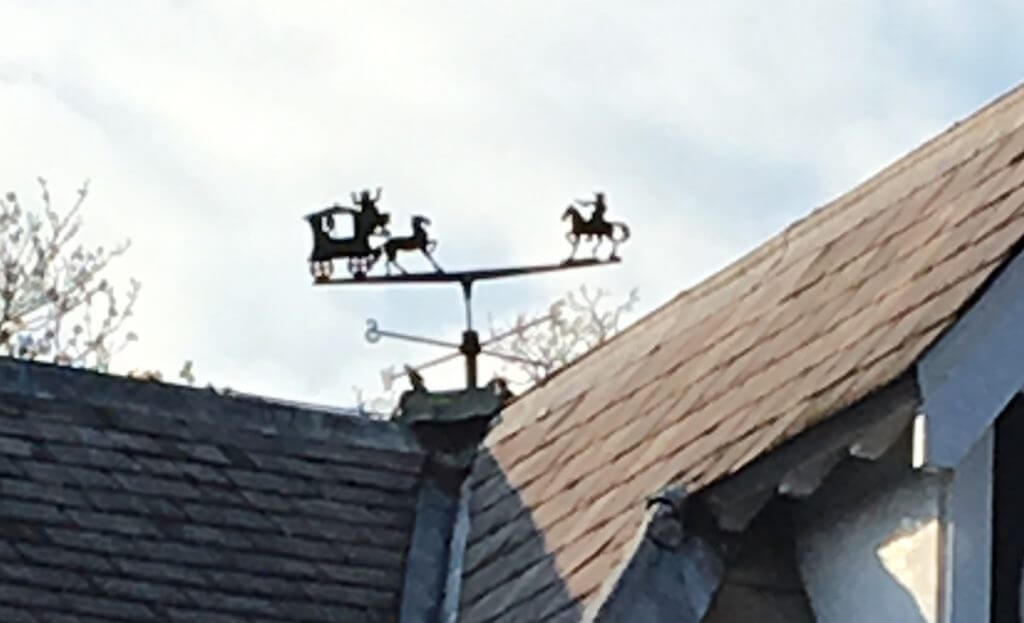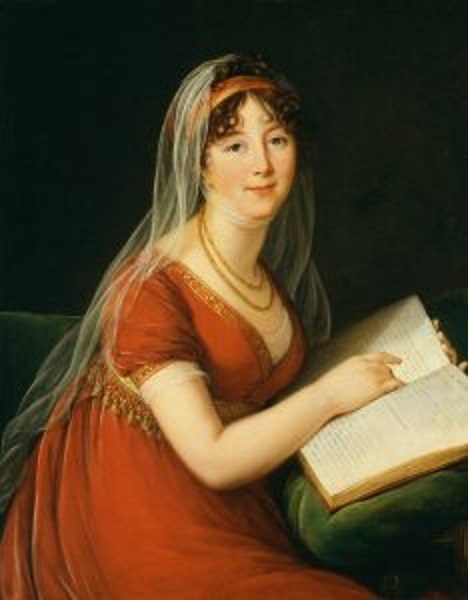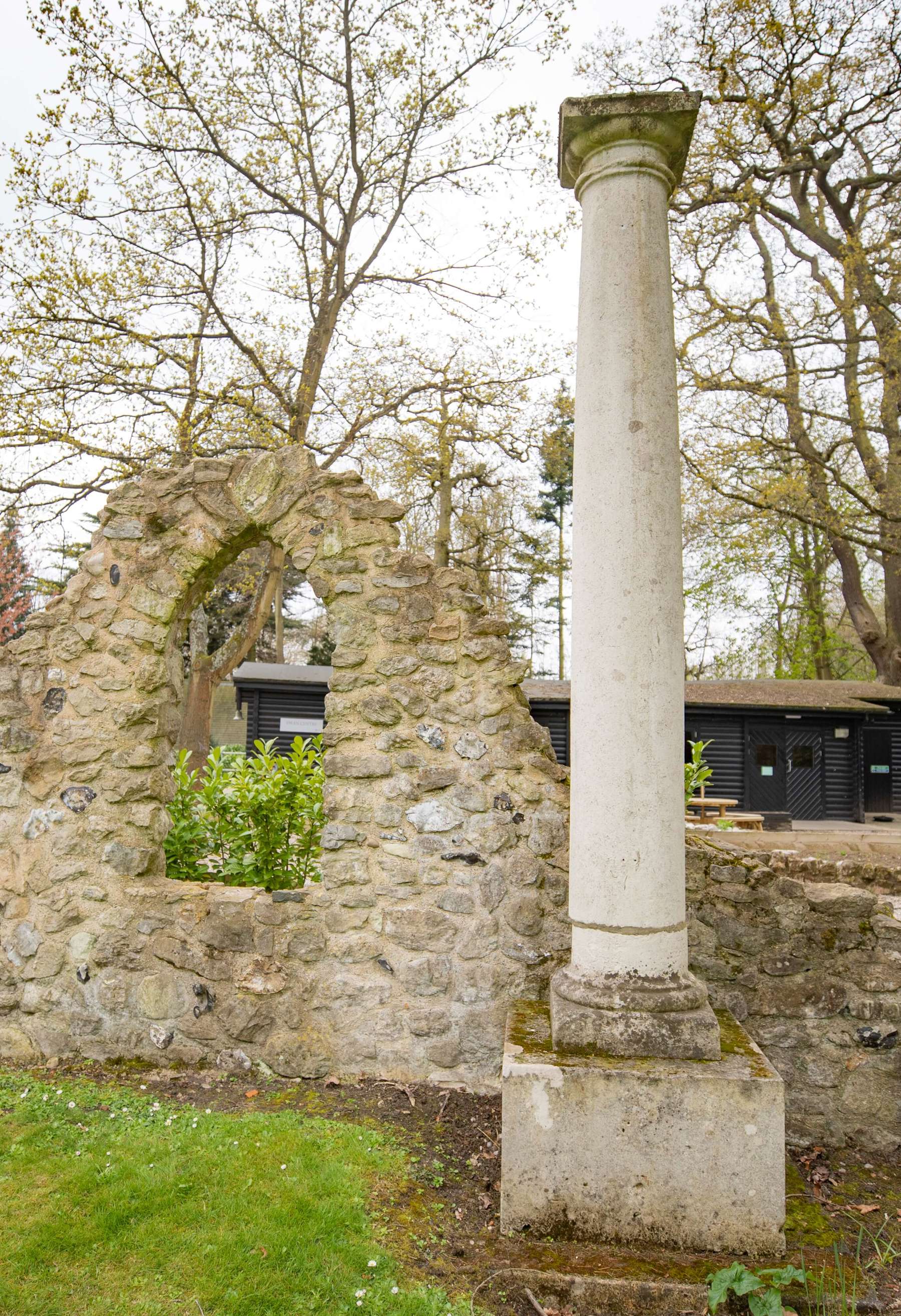Gilwell Park: 1407 to 1919
Gilwell Park: 1407 to 1919
The earliest records
The earliest record of Gilwell is in 1407. The estate was owned by John Crow and was called ‘Gyldiefords’.
By 1422, it was owned by Richard Rolfes, who changed the name to ‘Gillrolfes’. By the late 1400s, the name Gilwell had been adopted. This name came from the old English words ‘gill’ meaning ‘glen’ and ‘wella’ meaning ‘springs’. The estate covered the area now known as Essex Chase.
Next to Gilwell was a 14-acre property where, in the 1420s, Richard Osborne built Osborne Hall.

A highway robber's hideaway
The next most significant event in Gilwell’s history occurred around 1736, with the arrival of the infamous highwayman, Dick Turpin. Ester Palmer, Dick Turpin's wife, and their young son lived in a cottage next to Gilwell Green. This area is now the stables situated off Gilwell Lane.
Dick Turpin used Epping Forest as a hideaway after robbing the rich as they travelled through the forest on their way to or from London. His crimes came to an end in 1739 when he was caught, tried and executed in York. However, his connections to the estate is remembered by the weathervane on the White House reception roof.

Society hotspot
William Skrimshaw bought Gilwell and Osborne’s Hall in 1754, therefore combining the estate for the first time. The estate was then bought by Leonard Tresilian in 1771.
Tresilian increased the size of the estate and made improvements to Osborne Hall. He did this by covering the timber-framed exterior with slate tiles to make the structure look like stone. After his death in 1792, Tresilian left the estate, as well as his other properties, to his eldest daughter, Margaret.
Margaret was married to William Bassett Chinnery, a Chief Clerk to the Treasury. At this time married women could not hold property in their own right so when she inherited her father’s estate the ownership passed to her husband. William and Margaret had twins, George and Caroline in 1791 and Walter in 1793.
The Chinnerys moved from London to the Estate in the 1790s and renamed it, Gilwell Hall. William over the next two decades took every opportunity to expand the Estate by buying up land around it. Margaret was a keen gardener as well as enjoying the art and music. The Chinnerys held parties at Gilwell inviting poets, artists, musicians and even royalty including George III.
'One of my hostesses, Agnes Berry, took me to dine at Mr Chinnery’s where we had an excellent dinner, choice wines, choice spirits and a considerable portion of beauty for Lord Spencer and Viotti were there and the bluish stocking Lady Charlemont.
Besides little Miss Chinnery, who may claim a place among the geniuses as well as the beauties, Chinnery’s highest pretensions are that of having been Private Secretary to George Rose, he has attained the station of one of four first clerks to the Treasury.
Yet by command of money, which nobody knows how Chinnery has acquired, and ambitious of good company, good houses, excellent cooks, and excellent cellars, by frequent dinners and musical and dancing parties in which accomplishments the Chinnerys excel, they strive to purchase a society or at least the pretence of all that is most distinguished for rank, beauty, youth, talent and wealth.'

The family also had to deal with tragedy, in 1802 their youngest son Walter Grenfell had died aged nine. Margaret set up Walter's Urn in his memory placing flowers on it every day. In 1811 their daughter Caroline caught whooping cough but recovered, and a stone column was built in celebration of her recovery.
'It was an earthly paradise, in which the delightful harmony resulting from the perfect accord of duty and inclination were felt and enjoyed. Those who have been witness of our manner of living at Gilwell can vouch for the truth of what I say. God best knows why the happy, peaceful home where He was adored in fidelity and truth is now to be sold by public auction. In the garden is a little monument to the memory of my youngest son. We adorned it every day with fresh flowers – is it to be pulled down or destroyed? There is also a column very dear to my heart because it was put up in remembrance of what we vainly thought was the recovery of my daughter from whooping cough. The will of God be done. Nothing now remains to me of all that I so lately possessed but one child. I bow my head in resignation; to those who are the delegates of power on earth I resign my claim to my paternal home.'
Society scandal
In 1809 the Chinnery family commissioned major work on the house and estate, a year later they bought Branshot Manor, now known as the Branchet Field. At the same time there were questions at the highest levels over the source of the family wealth with correspondence between the Prime Minister and the Lord of the Treasury.
The end came when a Superintendent in New South Wales wrote to the Prime Minister, complaining about missing salaries. An investigation was launched with the Audit Office which uncovered his theft as being more than £80,000 and had been concealed by forging accounts of the ships carrying the money being attacked by pirates. To avoid the consequences of his actions he fled to Gothenburg in Sweden on 2 April 1812.
As well as dealing with the loss of her husband and public disgrace Margaret then had to cope with the loss of Caroline who suffered a relapse of whooping cough and died a day after her father fled into exile. Their remaining child George Robert Chinnery was given a job at the Treasury in order that Margaret had an income as she had no other family to turn to.
The Government requisitioned the Estate in March 1812 so it could be sold to cover the money taken by William Chinnery. The auction only raised £6,400 of which the House amounted to half of this figure. Margaret wrote the following account of leaving Gilwell for the last time,

Changing hands
The new owner of the Estate was Gilpin Gorst. His son Philip sold it to Thomas Usborne in 1824. Usborne added the extension to the House which included the crinoline staircase and the drawing room, he also brought the London Bridge balustrades to Gilwell.
Manufacturer, inventor and poet, William Alfred Gibbs bought Gilwell 1858. His most successful invention was Gibbs’ Dentifrice or toothpaste which is still made to this day. Gibbs died in 1900 and his wife five years later. His children had to sell off parcels of land to try and maintain the estate however over the next few years it became seriously neglected and was put on the market. This set the stage for Scouting and Gilwell Park to become intertwined.